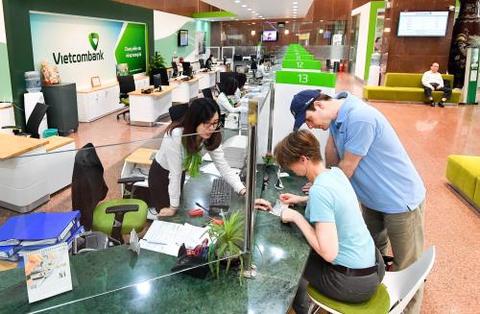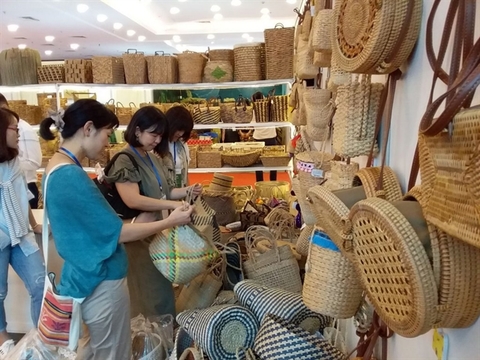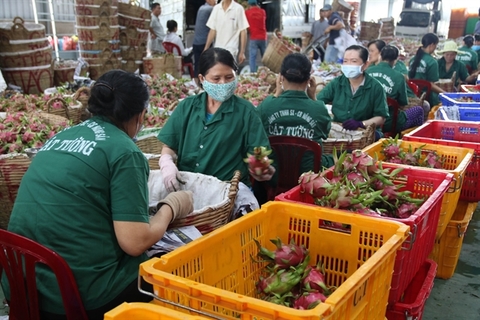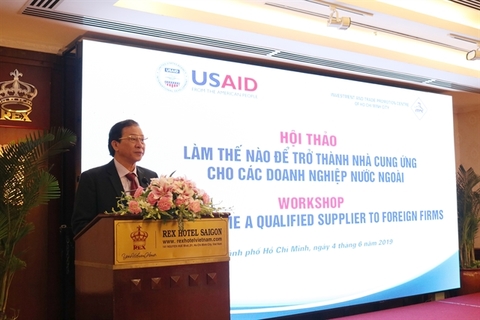EPE model held up by uncertainties
EPE model held up by uncertainties
While waiting for more specifics of the regulations relating to establishing export-processing enterprises in Vietnam, foreign investor can register to operate as a normal enterprise until more concrete guidance is issued, after which they will have to complete procedures to switch to EPE operations.
A massive wave of foreign investors decided to relocate their factories from China to Vietnam due to the United States-China trade war, a number of whom want to operate under the export-processing enterprises (EPE) model to continue exporting to the US. However, the lack of specific regulations related to fence and camera systems as well as material management system to help local customs authorities’ monitoring and inspection work at export processing zones (EPZs) cause difficulties to foreign investors. An investor from Europe, however, has become an outstanding case.
In February, the company from Europe worked with the Vinh Phuc Industrial Zones Management Authority to express its plans to establish a manufacturing factory in Ba Thien 2 Industrial Park in the northern province of Vinh Phuc with the total investment capital of around $25 million, after which it could start the arduous journey to complete administrative procedures to be granted the enterprise registration certificate (ERC) under the EPE model.
According to article 2(30) of Decree No.82/2018/ND-CP dated May 22, 2018, industrial parks and economic zones, export processing zones, export-processing enterprises or industrial parks reserved for export-processing enterprises shall be separated from the outside by fence systems, have ports, entrance and exit doors, and will have to fulfill requirements concerning supervision and control by customs authorities and related functional agencies, according to regulations applicable to non-tariff areas and regulations laid down in the legislation on import and export duty.
In order to be granted an investment registration certificate (IRC) and then the ERC, investors have to receive the approval of the customs authorities that they comply with the above regulations, as stipulated by Article 1(30) of the same decree. Notably, the investment registry shall be held responsible for gathering opinions from the competent customs authority on the ability to satisfy the conditions of customs inspection and supervision before issuing the IRC or providing written confirmation to foreign investors.
However, according to a representative of a consultancy firm in Hanoi, Vietnam, the knot that made the company face difficulties in registering under the EPE model was Dispatch No.1728/BTC-TCHQ of the Ministry of Finance (MoF) submitted to the Ministry of Planning and Investment (MPI) to clarify difficulties in establishing and operating EPEs. In addition, the MoF attached numerous proposals relating to the conditions of customs inspection and supervision to be added to Decree 82. Notably, EPEs have to be separated from the outside by a hard fence system. The camera system has to operate 24/7 and has to show clear images of the goods when they are transported inside and outside of the factory, as well as of the manufacturing process. All data of camera systems have to be stored for 12 months. Besides, the camera system has to be connected to local customs authorities. Furthermore, enterprises have to establish a system to manage the materials and supplies imported to serve manufacturing operations for export and can deliver the records about imported and unused materials and exported goods to the local customs authority.
The dispatch also mentioned that as there have yet to be specific regulations on the conditions of customs inspection and supervision, the MoF proposed the MPI to report to the prime minister to authorise the recognition of the enterprise as an EPE in case the enterprise confirms that it has met all conditions set by the MoF and then assign the local customs authority to inspect the enterprise before allowing it to begin operations.
“After studying the dossier of the company, the Vinh Phuc customs authority refused to comment on this dossier, citing the lack of specific guidelines about customs inspection and supervision. As a result, the company was not able to register under the EPE model,” said the consultancy firm.
Responding to the above incident, a representative of the MPI’s Department for Economic Zones Management told VIR that right after receiving the dispatch from the MoF as well as learning of the company’s difficulties, the department is making an effort to complete a document requesting the prime minister’s opinion.
While waiting for more specific regulations, the Vinh Phuc Industrial Zones Management Authority advised the company to register to operate as a normal enterprise until there are appropriate guidelines and then complete procedures to switch to the EPE model. In such case, the newly set up enterprise may be able to get a VAT refund for the construction period as well as during the operation, provided the supporting documents are in order. Otherwise, the company needs to wait until clear and detailed guidance on EPE is released, then the Vinh Phuc Industrial Zones Management Authority will grant the IRC to the company.
The foreign investor agreed with this solution to avoid further delays in its investment plan. This may be an outstanding case for EPEs that face difficulties in relocating their factories from China to Vietnam, but in light of the US-China trade war, there may be more such cases in the future. Thus, in order to ensure seamless investment attraction, policymakers should issue regulations with detailed guidelines, said the consultancy firm.



















